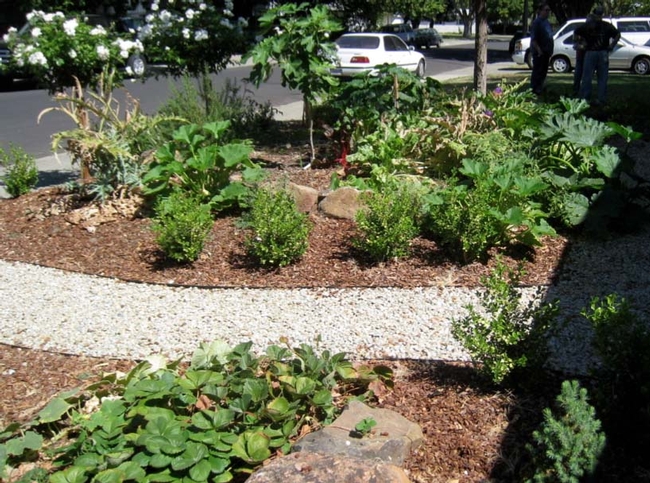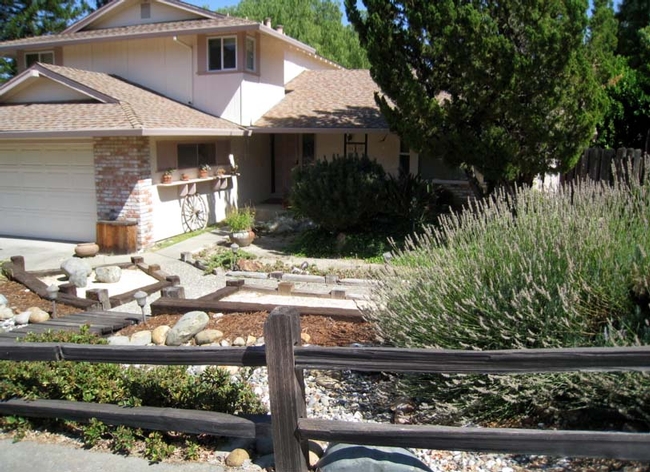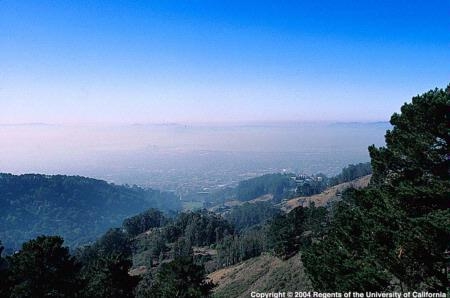Posts Tagged: air pollution
International symposium will explore air pollution’s effect on plants
Air pollution is harmful to the health of people and animals. That much we know, but how does air pollution affect plants?
Scientists from 25 countries will gather on the Monterey Peninsula to discuss “Plants and the Changing Environment” in June. The 9th Air Pollution and Global Change Symposium will be held June 8-12 at the Asilomar Conference Center in Pacific Grove.
The goal of the series is to consider interactions of air pollution and global change and their impacts on vegetation.
“The symposium is unique in dealing with effects at all levels from molecular and cellular mechanisms, whole plant and crop impacts, all the way up to models of ecosystem and regional impacts,” said David A. Grantz, UC Cooperative Extension specialist based in the Department of Botany & Plant Sciences at UC Riverside.
The symposia are held every few years in different countries, the last in Groningen, The Netherlands, in 2011. The event in California is being organized by Grantz and Kent O. Burkey, USDA/ARS plant physiologist and North Carolina State University professor of crop science and botany in Raleigh.
UC scientists and students engaged in research on the interactions of plant function, metabolism and communities with environmental pollution and global change are encouraged to attend.
“This is an important opportunity for U.S. scientists because the last time this symposium was held in the U.S. was in 1992,” said Grantz. “This is a great chance to catch up on the physiological ecology and modeling efforts underway in Europe and Asia.”
The confirmed keynote speakers include
- Dennis Baldocchi, University of California, Berkeley, USA
- Lisa Emberson, Stockholm Environment Institute and University of York, U.K.
- Lisa Ainsworth, USDA/ARS and University of Illinois, USA
- Koike Takayoshi, Hokkaido University, Japan
- Harry Harmens, Centre for Ecology and Hydrology, Environment Centre Wales, U.K.
- Allen Lefohn, ASL and Associates, USA
- Atul Jain, University of Illinois, USA
- Rainer Matyssek, Technische Universitat Munchen, Germany
The deadline for abstracts, registration and lodging is March 31. The agenda, registration and housing information can be found at WWW.APGC.EU.
So, How About That Lawn?
This is the perfect time of year to think about your lawn. Once the only thing people planted as a front yard ground cover, the lawn is now being seriously re-considered. A lawn takes a lot of care: regular weed control, periodic feeding and, ideally, de-thatching and aerating once a year. If we use chemical fertilizers, pesticides or herbicides on our lawns, there is almost always some run-off that eventually feeds into the San Francisco Bay. Our gas-powered mowers, de-thatchers and aerators contribute pollution to the air we breathe and the electric ones, naturally, use electricity, thereby adding more carbon to the air. Additionally a lawn takes a lot of water.
According to sustainable landscape designer and Cupertino Master Gardener Deva Luna, lawn mowers account for 5% of air pollution in the United States, (I wonder if that includes the weed-eater and the leaf-blower.) and more than 30% of urban fresh water is used to water lawns. Holy cow! That's a lot of water that we may not continue to have available as the population of our state continues to grow, the climate continues to warm, and aquifers are depleted.
With the goal of encouraging wise water usage and a more-healthy, sustainable landscape, Solano County is continuing its Water-Efficient Landscape Rebate program this year. The Solano County Water Agency is again offering residents a rebate of one dollar per square foot of existing lawn removed and replaced with native and drought-tolerant plants on a drip irrigation system. The County is also offering a Bay Friendly Landscape Workshop, planned for September 14th from 10:00 a.m. to 1:00 p.m. Check the website for details. http://www.solanosaveswater.org/Rebates.html
Lawn removal is a pretty big project. Depending on the type of grass you have there may be a variety of approaches. It may involve sod cutting/scraping and smothering; solarizing the soil; sheet mulching; rototilling; or even just pick and shovel labor. If you are interested you can find a nice "how-to" list at fremontlibraries.wordpress.com/2009/06/05how-to-remove-your-lawn.
You can also check out www.bayfriendlycoalition.org/principles for some good reasons to take out that lawn as well as a list of garden professionals in the Bay Area.
In our family we are beginning the process of removing a Bermuda grass lawn and replacing it with appropriate drought-tolerant perennials, perhaps a small deck, a dry creek bed and a swale to catch rainwater, keeping it on the lot. We'll get our first experience with solarization and hope for a nice warm next six weeks to really toast that grass. Easier care, lower water bills and the knowledge that we are making our planet home a little bit more healthy will surely be worth the effort.
Attached are a few pictures of water-wise yards in our area.

Deodara House. (photos by Marian Chmieleski)

Millward House

Wykoff House
Fair weather leads to clean air and farmer dispair
This year's mild summer temperatures - which follows a cool, wet spring - has been a curse for San Joaquin Valley farmers, according to an article in Saturday's Fresno Bee.On the bright side, a companion story said this year's spring and summer weather is also responsible for cleaner air than usual in the Valley.
In the farm story, reporter Robert Rodriguez devoted significant space to the Valley's raisin crop, which must reach specific sugar levels before an army of 25,000 workers clips grape bunches and arranges them on paper trays in the field to dry.
"The pressure is really going to be on because we will have a shorter amount of time to pick," the article quoted raisin farmer Pete Gonzalez. "Everybody is going to want to go at once. And that's not going to be possible."
Processing tomatoes are typically planted in stages so processors aren't inundated with the entire crop at once. However, the cool spring delayed the first planting. That means some tomatoes may become overripe before processing, reducing their value, the article said.
For the part of his story on cotton, Rodriguez spoke to two University of California Cooperative Extension experts. UCCE farm advisor Dan Munk told the reporter that cotton growers are hoping for a warm fall to finish the crop.
"The more we go into November, the more opportunities we will have for days on end of fog, and that means more moisture and wet cotton," Munk was quoted.
UC integrated pest management advisor Pete Goodell said he is advising growers not to wait too long to harvest.
"Our approach is to go for the shortest season you can," Goodell was quoted. "The later a grower goes, the greater the chances of losing everything."
In the article about clean air, Bee staff writer Mark Grossi reported that the cool spring and mild summer, paired with other factors - such as wind - created poor conditions for the formation of ozone.
"If the San Joaquin Valley violated the federal ozone standard every day for the rest of the summer, this still would be the cleanest season on record," Grossi wrote.
Kern County UCCE hosts air quality study
A 60-foot tower near the UC Cooperative Extension office on South Mt. Vernon Avenue in Bakersfield has been built to hold instruments aloft for air quality studies in the area, the Bakersfield Californian reported.
Researchers from around the country are conducting the studies to gain a deeper understanding of the environment and to inform air quality regulatory policy.
"You need to measure what's in the air, and then from that you go back and look at crafting regulatory policy," UCCE farm advisor John Karlik was quoted. "But science has to precede policy."
The tower is hosted by the UC Cooperative Extension and funded by the California Air Resources Board.
Bakersfield was chosen as a site for the project, which began in May and runs through the end of June, because of its problems with air quality and its relatively strong sources of atmospheric compounds, the article said.
The participating scientists - representing UC Berkeley, University of Wisconsin and University of Miami - have already begun assessing data.
"It's all about how we put those data into a larger framework," Karlik was quoted. "We think it's of broader public interest."
Polluted air may contribute to farmworkers diabetes risk
The Sacramento Bee picked up on a UC news release about the most recent issue of California Agriculture journal, which said more than 1 million California farmworkers face a higher risk of diabetes and respiratory disease because of poor air quality.
The news release says California's Central Valley has the highest recorded levels of particulate matter in the country. The polluted air results in increased rates of asthma and other respiratory illnesses. In addition, the release said research points to possible environmental links between pesticide exposure and the risk of diabetes.
In a sample of 1,300 Mexican Americans who participated in the Hispanic Health and Nutrition Examination Survey, conducted from 1982 to 1984, higher levels of organochlorine compounds, which are found in pesticides, were observed in the blood of adults with self-reported diabetes compared to those without diabetes, according to the Cal Ag article.
"However, due to the cross-sectional design of the study, it is not clear whether there is a causal relationship between pesticide exposure and diabetes, or what the nature of that relationship may be," according to the article.
That said, perhaps the Sacramento Bee headline - "Farmworker diabetes risk linked to bad air" - is overstated.
The UC release also appeared on Yubanet.com.

The January to March issue of California Agriculture journal.


